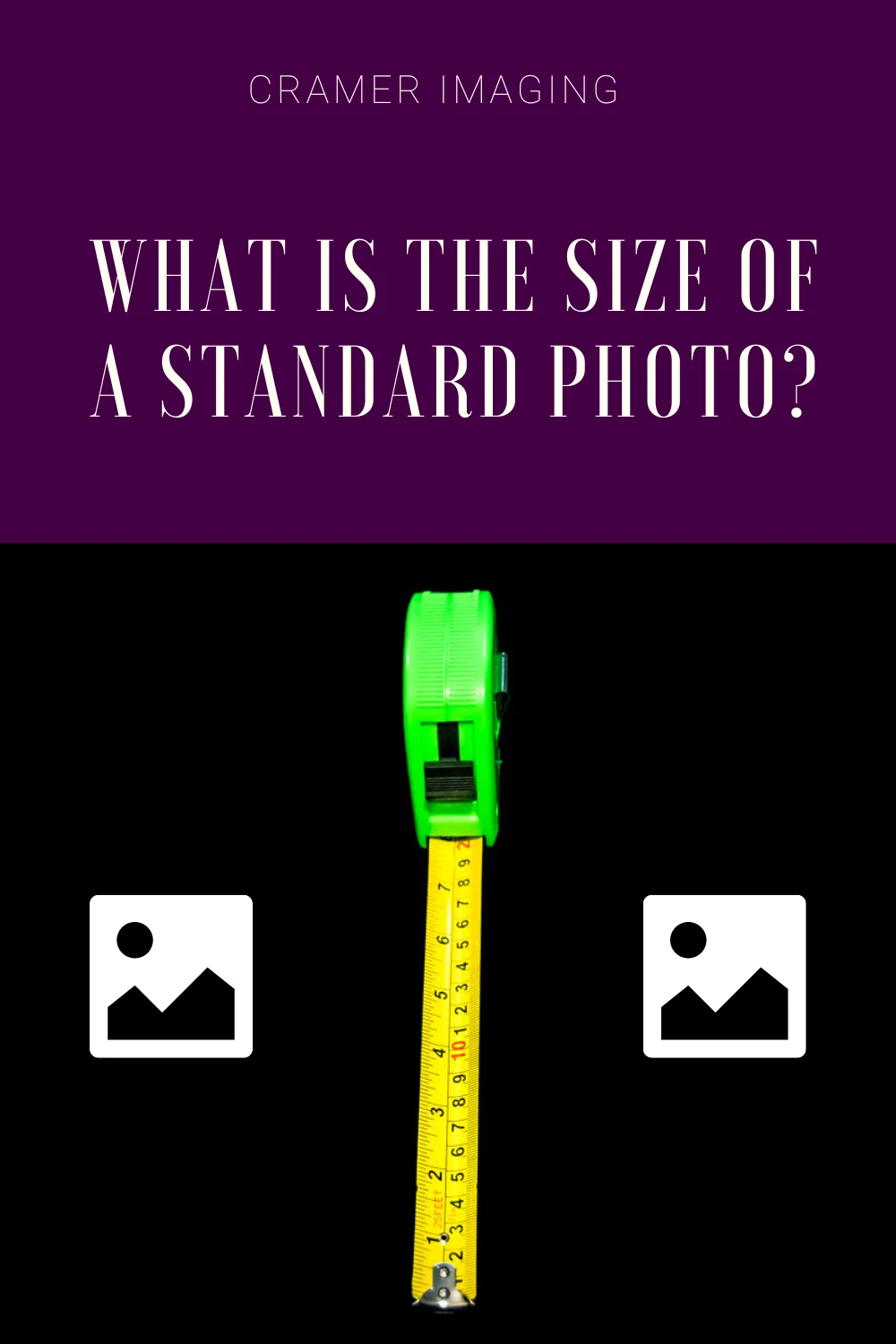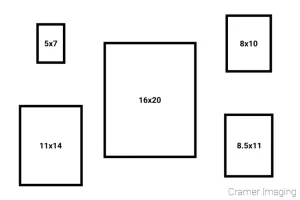
Here’s a question I had no idea people were asking. “What is the size of a standard photo?” That’s a bit of an odd question and there’s really no single good answer for that question. However, we’re going to dive in and answer this question anyways. So, if you’re ready, here we go.

The first thing I thought when I learned that people want to know what the size of a standard photo is was “There’s lots of different ‘standard’ photo sizes. Be more specific.” I started thinking about standard sizes for different functions such as wallet-sizes, photo albums, wall displays, etc. Then I realized that there’s a completely different part to this question which covers a more European approach.
In Europe, if you live there you already know, they don’t go by the dimensions of a photo print as their size measurement. They use a different system of sizes beginning with the letter A and going up incrementally from 0 to 10. Since realizing that this is also a part of that question, I decided I had better add it in as well.
When it comes to my first answer to the question, I fall back upon my native US experiences. There’s lots of different answers for what a ‘standard’ photo size is. The photography industry, as a whole, offers lots of different sizes for photo prints. The most common sizes are below.
All of these are in the standard measurement of inches. If you need a conversion to metric and centimeters, simply multiply the measurement in inches by 2.54. You’ll get the metric measurement.

Now, those may be standard sizes for photo prints, but what good does that do if you don’t know what size will work best for your purposes? The chart below should help with that.
| Common Use | Size (inches) |
| Wallet | 2.5×3.5 |
| Photo Album | 4×6 |
| 5×7 | |
| Small Wall Displays | 8×10 |
| 11×14 | |
| Large Wall Displays | 16×20 |
| 20×24 | |
| 24×36 |
Since Europeans use a different system to measure length and width (meters in the metric system) and a different system for sizes of prints, it seemed only right to include that information as well. Use the chart below to get a good idea of how the European standards apply to the standard size of a photo.
| Common Use | Size | Dimensions (mm) |
Dimensions (inches) |
| Wallet | A7 | 74 x 105 | 2.9 x 4.1 |
| Photo Album | A6 | 105 x 148 | 4.1 x 5.8 |
| A5 | 148 x 210 | 5.8 x 8.3 | |
| Small Wall Displays | A4 | 210 x 297 | 8.3 x 11.7 |
| A3 | 297 x 420 | 11.7 x 16.5 | |
| Large Wall Displays | A2 | 420 x 594 | 16.5 x 23.4 |
| A1 | 594 x 841 | 23.4 x 33.1 | |
| A0 | 841 x 1,189 | 33.1 x 46.8 |
When trying to decide what the size of a ‘standard’ photo is, it really does help to get more specific. Are we talking the US or European standards? What do you plan on using the photo for? After all, a wallet-sized photo may be a standard size but not for a wall display. It’s too small for that purpose.
Once you understand the system to use and your purpose for the photo, finding out the standard size(s) will be easy using the charts above.
Do you feel we missed a definition of a ‘standard’ photo size? Share it below in the comments. We’d love to learn together.


Receive monthly updates in your inbox from us.

Join our email-only photo of the week club to get the full stories behind how we captured our favorite fine art landscape photos.
We respect your privacy
No More Results
Powered by atecplugins.com